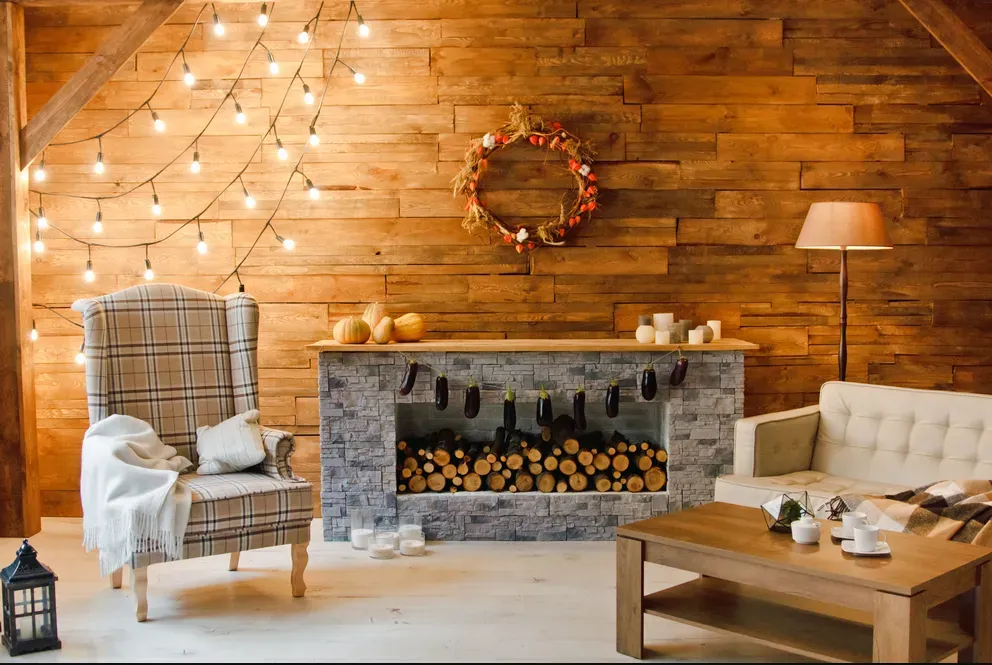The Power of Lighting: Beyond the Chandelier for Mood and Functionality

By
Shrusti Naik
Posted on August 30, 2025. 10 mins

The Power of Lighting: Beyond the Chandelier for Mood and Functionality
Introduction

Lighting has always been more than just a way to brighten a room, it shapes mood, perception, and even productivity. In India, where homes increasingly double as workspaces, entertainment zones, and personal retreats, lighting design has become as critical as furniture or layout. According to Statista India (2024), the country’s lighting market is expected to cross USD 4.8 billion by 2026, driven by the surge in demand for LED and smart lighting solutions. While chandeliers remain aspirational symbols of luxury, Indian households are now shifting their focus towards layered lighting, energy efficiency, and mood-based illumination that transforms living spaces. Here's a guide that tells you what to Do (and Avoid) Room-by-Room if you are Designing Your First Home
Lighting as the Silent Architect of Mood
A home’s atmosphere can change dramatically with the right lighting. Warm, dim lighting tends to relax the mind, while bright, cool-toned light enhances concentration and alertness. For Indian families, this shift is visible in dining areas where pendant lights create intimacy, while study rooms demand task lighting that reduces eye strain. A recent survey by Livspace (2024) highlighted that over 70% of Indian homeowners now consider lighting design an integral part of home planning, compared to just 40% a decade ago. Beyond functionality, lighting has become an invisible architect, guiding emotions, signalling transitions between activities, and setting the tone for gatherings. Besides. here are some Design Choices That Can Actually Increase Your Property Value
The Shift from Decorative to Functional Lighting
Traditionally, lighting in Indian homes revolved around decorative elements, crystal chandeliers in drawing rooms or ornate lamps for festive flair. Today, however, the emphasis is on functionality paired with design. Modular homes in metros like Mumbai and Bengaluru use track lights, recessed lighting, and cove designs to maximize utility in compact spaces. According to Economic Times (2025), India’s smart lighting segment is growing at 23% CAGR, with urban households embracing voice-controlled and app-based systems that allow residents to adjust lighting intensity and color temperature to suit activities, from cooking to meditation. Take a look at these Kid-Friendly Interiors That Aren’t an Eyesore
Layered Lighting: Creating Depth and Dimension
Professional designers often stress that no single light source can define a room. Instead, layered lighting, ambient, task, and accent, creates depth and flexibility. For example, ambient lighting in a living room provides general illumination, task lights near sofas or reading corners offer focus, and accent lights highlight artwork or architectural features. This layered approach is particularly relevant in Indian apartments where multi-use spaces require versatile setups. In fact, Invest India (2025) reports that demand for modular, customizable lighting has surged in tier-1 and tier-2 cities, as homeowners seek both aesthetic control and energy savings.
Sustainability and the Rise of Smart Lighting in India
The conversation around lighting today cannot be separated from sustainability. India has already seen a remarkable transition, with LED bulbs now accounting for over 80% of the domestic lighting market (Business Standard, 2025). The government’s UJALA scheme played a significant role in this transformation, making LEDs affordable and accessible across urban and rural households. Smart lighting takes this further, allowing users to schedule usage, reduce wastage, and optimize energy consumption. For eco-conscious homeowners, smart bulbs and solar-powered outdoor fixtures are no longer just trends, they are financial and environmental necessities. With all this, here is another way to enhance your home by Choosing the Right Color Palette for Each Room
Cultural Nuances: Lighting in Indian Homes
Lighting in India also carries cultural significance beyond its functional role. Diwali, the festival of lights, symbolizes illumination as a form of prosperity and positivity. Similarly, traditional homes often use brass diyas and warm-toned lamps to create spiritual and welcoming atmospheres. The modern Indian home merges this cultural continuity with contemporary needs, layering smart fixtures with traditional elements. For instance, a Jaipur homeowner may combine recessed ceiling LEDs with handcrafted lanterns, blending old and new. This fusion showcases how lighting in India is not just about aesthetics, but about preserving identity while embracing technology. Besides take a look at Designs You’ll Actually Want to Live With where you can include all these safety measures smoothly.
Conclusion
Lighting today is no longer about a singular chandelier hanging in the center of the living room. It is about designing an experience, one that adapts to moods, conserves energy, and enhances daily life. For Indian homeowners, the future lies in embracing layered, smart, and culturally resonant lighting that does more than illuminate, it defines how a space feels and functions. As homes become multi-purpose ecosystems, the power of lighting will remain central in shaping both comfort and efficiency. The true art of lighting, then, is not in its visibility, but in its ability to quietly transform the way we live.
For those in pursuit of their dream home, investment opportunities, or a sanctuary to call their own, Jugyah provides top housing solutions with its intelligent technology.
Frequently Asked Questions
Q1. What is the best type of lighting for Indian homes? A combination of ambient, task, and accent lighting works best, as it allows flexibility and energy efficiency while enhancing mood.
Q2. Are smart lights worth it in India? Yes. With falling prices and rising electricity costs, smart lighting helps optimize energy use, making it a cost-effective choice.
Q3. Which lights are most energy-efficient in 2025? LEDs remain the most energy-efficient option, with newer smart LEDs offering scheduling and dimming features that further reduce consumption.
Q4. How does lighting impact mood at home? Warm tones create relaxation, while cooler tones boost alertness and productivity. Layered lighting allows homeowners to shift moods seamlessly.
Q5. Is decorative lighting still popular in India? Yes, but it is now used alongside functional lighting. Chandeliers, pendant lights, and diyas are often combined with smart systems to balance tradition and modernity.